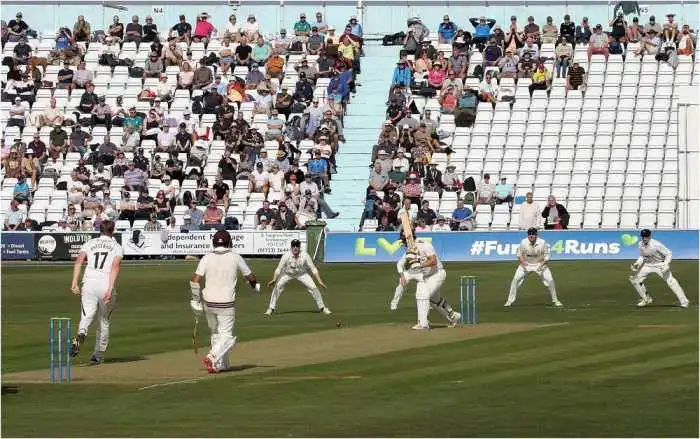Follow the trend

Cricket, often referred to as the gentleman's game, is a popular sport played and cherished by millions worldwide. Whether you're a beginner eager to learn or someone looking to brush up on their cricket knowledge, this comprehensive guide will walk you through the basics of how to play cricket. From understanding the concept of a wicket to exploring different types of matches and the significance of overs, this blog covers it all.
Cricket is a bat-and-ball sport played between two teams, each consisting of eleven players. The objective is to score more runs than the opposing team while taking wickets to dismiss the opposing players. The game is played on a large oval-shaped field called a cricket ground, with a rectangular pitch in the center.
In cricket, a wicket refers to the set of three stumps (vertical wooden posts) topped with two bails (small wooden pieces) at the bowler's end of the pitch. The batting team's objective is to protect the wicket from being hit by the ball while scoring runs. If the wicket is hit by the ball and the bails are dislodged, the batsman is considered "out" or dismissed.
The origins of cricket can be traced back to 16th-century England, although the modern form of the game developed in the 18th century. The first recognized cricket match took place in 1697, and the sport gained popularity throughout the British Empire and beyond.
Cricket offers various formats of matches, each with its own rules and durations. The most common forms of cricket include:
1. Test Matches: Traditional and longest format played over five days, with each team having two innings.
2. One-Day Internationals (ODIs): Limited-overs matches played in a single day, with each team having 50 overs to bat and field.
3. Twenty20 (T20) Matches: The shortest format played with each team having 20 overs to bat and field, making it faster-paced and more explosive.
In cricket, an over refers to a set of six consecutive deliveries bowled by a single bowler. The number of overs in a match depends on the format being played. Each team gets a specific number of overs to bat and score runs, while the opposing team tries to limit the scoring by taking wickets and preventing runs.
1. Batting: The batting team aims to score runs by hitting the ball with their bats and running between the wickets. The batsmen need to protect their wickets while scoring runs by running between the creases.
2. Bowling: The bowling team tries to dismiss the batsmen by getting them out through various means, such as hitting the wickets or catching the ball hit by the batsman before it touches the ground.
3. Fielding: The fielding team attempts to stop the ball and prevent the batting team from scoring runs by fielding strategically, catching the ball, and returning it to the wicketkeeper or directly to the wicket.
Cricket is a fascinating and intricate sport with its unique set of rules and terminology. By understanding the basics of a wicket, the origins of the game, different match formats, and the significance of overs, you are well on your way to enjoying and playing cricket. Remember, practice, teamwork, and a love for the game are key to mastering the skills required. So grab your bat, learn the rules, and immerse yourself in the joy of playing cricket.
Your email address and mobile will not be published.





GDvbdVyH
19/April/2024 14:51srJEqThWXn
GDvbdVyH
19/April/2024 14:51srJEqThWXn
JtioMGQwuHl
11/April/2024 07:45zptqEBjJ
JtioMGQwuHl
11/April/2024 07:45zptqEBjJ